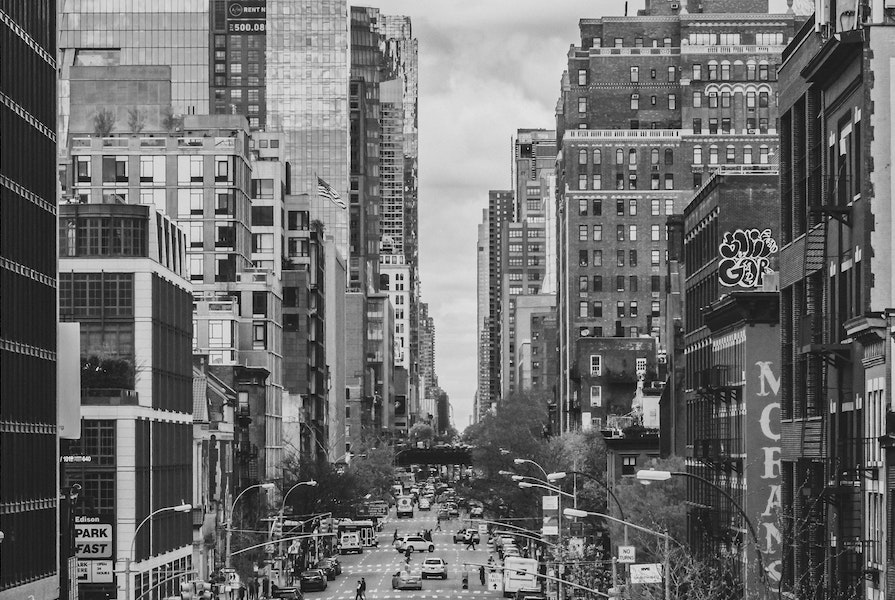We are at a key moment in economic history right now. This is the definitive movement of the world and economic life from a world of territorial states and economies to one of cities. Cities have been a feature of human life for almost 6,000 years, but for most of human history they have been a minority experience, with no more than 10% of the population living there. Today, though, they are more important than ever. You cannot understand the nature of the present world economy without understanding the centrality of cities to the world we live in. The future is also going to be city-dominated, and several of the main trends we can see in economics, politics and social life come from that.
Across the globe, cities are where the action is. The last 60 years have seen urbanisation that is unprecedented in its scale and universality and this is continuing. Currently 55% of the world’s population live in cities, according to the UN, and this is predicted to reach 68% by 2050. If the process of urbanisation in Africa continues to accelerate, the figure then will be even higher.
People who live in cities are more productive than those living elsewhere, and they become more productive simply by moving there
Nor is it simply a matter of people migrating to cities and living there. They are where most economic activity and wealth creation happens. The McKinsey Global Institute estimates that by 2025 the world’s 600 largest cities will contain 25% of the world’s population but produce more than 60% of the world’s total GDP (in real terms $64tn). People who live in cities are more productive than those living elsewhere, and they become more productive simply by moving there. The reason for this is that cities are where innovation (the ultimate driver of economic growth) happens. This is associated with large clusters of what Richard Florida calls ‘the creative class’, a term covering everything from artists and musicians to software designers and scientists.
Why is this? The answer lies in what sociologists and economists call agglomeration effects. These are produced by two simple variables: the number of people in a given space and the average distance between them (actually the time it takes them to physically meet). The greater the density, up to a point of diminishing returns, the more productive they will be, because certain kinds of activity will become possible at a high density that are not possible when population is more dispersed. The higher density means simply that some things cost less to do.
It also means that the chances of meeting someone with complementary knowledge are higher. Density makes network formation and the exchange of not only goods and services but also, crucially, ideas, cheaper and easier. Successful cities are demographically diverse, and this combined with the greater privacy afforded by urban living means more social, cultural and intellectual pluralism and variety. This in turn means a greater exchange and combination of ideas and perspectives and hence more innovation.
In economic terms we are already in a world of city economies, and this is the reality that policy-makers, investors and citizens deal with
The wealth created by city living has several forms. The simplest is the value of the goods and services produced, consumed and exchanged (much of which is only possible in an urban environment). The other obvious form of wealth is the built environment, real estate – the economic value here comes from the way this enhances the human experience and enables activities and exchanges. The most valuable, however, particularly today, are the ideas that are produced. Finally, there are intangible and subjective benefits captured under the rubric of ‘quality of life’ – this can vary considerably. Agglomeration by itself, while it has effects, is limited. What is also needed is governance, a set of administrative institutions that provide collective services, and legal and social institutions – above all stable title and property rights and the rule of law.
Successful cities show this, and we can discern several trends that reflect this. The first is the move to ‘smart cities’, using emerging technologies to run the city more effectively. The second is diminishing dependence of cities on the rural hinterland, mainly due to the soon-approaching demise of traditional agriculture due to such things as synthetic food and vertical farming. The third is developments in governance with the emergence of metropolitan government as the main political unit in many parts of the world. Sometimes (for instance China) this is top-down, but more often it is bottom-up as in Europe and the United States.
Finally, the world economy is no longer composed of national economies as its building blocks: it consists of a network of about 2,000 city-regions with around 600 of those the key hubs and about a dozen the global centres that tie the whole structure together. In economic terms we are already in a world of city economies, and this is the reality that policy-makers, investors and citizens deal with. Politically we are not there yet, but it is a reasonable speculation that we are moving towards a world of city-states.







